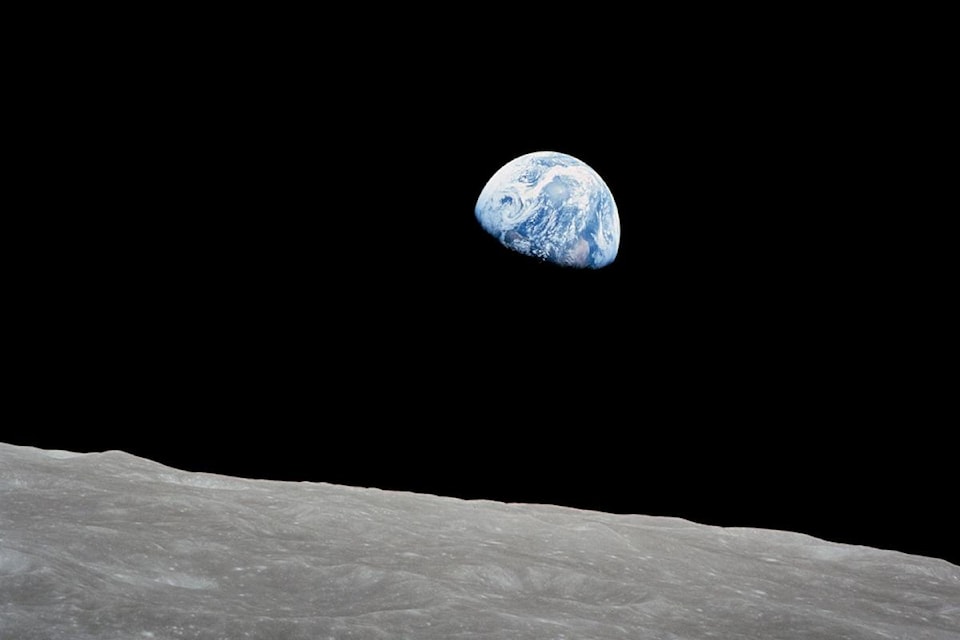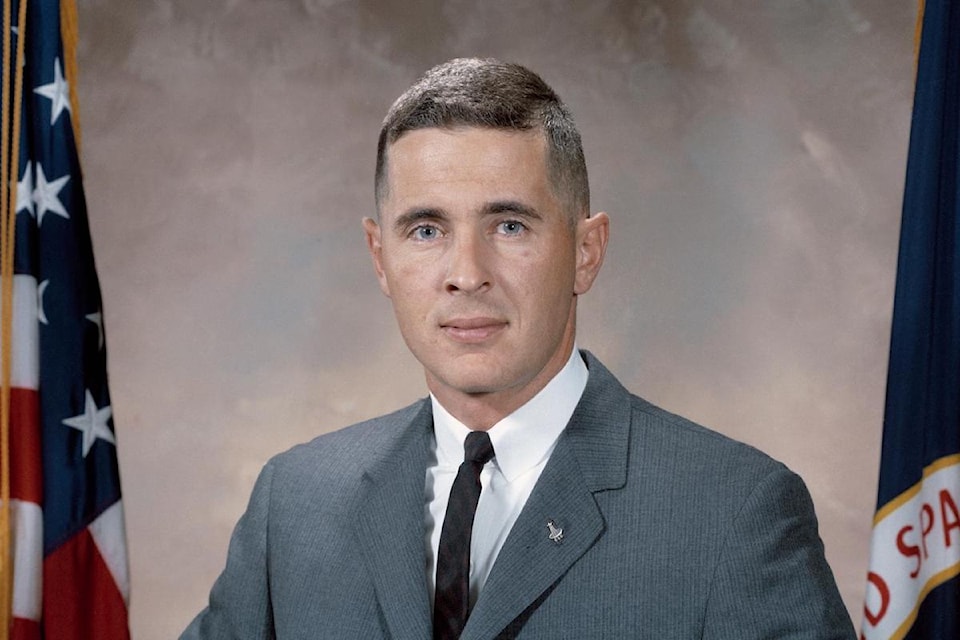A former Apollo 8 astronaut who took one of the most famous photos of Earth died in a Washington State plane crash not far from Greater Victoria on Friday (June 7).
The family of William Anders confirmed the 90-year-old was piloting the two-seat plane that plummeted into the waters near the San Juan Islands, about 20 kilometres east of Sidney.
Anders was the lunar module pilot for the Apollo 8 mission that made his three-man crew the first humans to orbit the moon. The 1968 endeavour saw Anders take the famed Earthrise photo, which allowed humanity to look back on itself in colour for the first time.
The photo is credited with sparking the global environmental movement for showing how delicate and isolated Earth appeared from space.
“Oh my god, look at that picture over there. There’s the Earth coming’ up. Wow, is that pretty,” Anders is heard saying in a recording from the module before he quickly swaps colour film into his camera to capture Earth hovering over the moon's crest.
In a statement on the astronaut's passing, NASA administrator Bill Nelson called Anders a hero who, through taking the legendary photo, offered the world the deepest gift an explorer can give.
"Bill was the first to show us, through looking back at the Earth from the threshold of the moon, that stunning image – the first of its kind – of the Earth suspended in space, illuminated in light and hidden in darkness: the Earthrise," Nelson said.
“At every step of Bill’s life was the iron will of a pioneer, the grand passion of a visionary, the cool skill of a pilot, and the heart of an adventurer who explored on behalf of all of us."
Anders said the image of the blue planet made him realize Earth was small, delicate and not the centre of the universe.
"We came all this way to explore the moon, and the most important thing is that we discovered the Earth" Anders famously said.

The San Juan County Sheriff's office first received reports about the plane crash shortly before noon on June 7. The county's dispatch centre was told an older model of plane was flying southward before it went into the water near the north end of Jones Island and sunk, San Juan County Sheriff Eric Peter said in a statement.
The United States Coast Guard Pacific Northwest division alerted the public around 1 p.m. that it and other agencies were responding to the crash with search and rescue efforts. Good Samaritans also joined the more than four-hour search effort, which ended Friday afternoon after a dive team recovered the pilot's body.
“Our thoughts are with the family following the tragic loss of their loved one,” Capt. Mark McDonnell, commander of U.S. Coast Guard Sector Puget Sound, said in a statement.
Anders was also the backup pilot for Geminni 11 and backup command module pilot for Apollo 11, the 1969 moon landing that was informed by the Apollo 8 crew's photographs of lunar landing sites.
In 2018, a moon crater that's visible in the astronaut's iconic image was named Anders' Earthrise.
After leaving NASA, Anders and his wife, Valerie, founded the Heritage Flight Museum at Bellingham International Airport in 1996 with several vintage planes and has hosted several visits from famed World War II bombers. The museum was moved to Skagit Regional Airport in 2013.
The couple moved to Orcas Island, in the San Juan archipelago, in 1993, and kept a second home in their hometown of San Diego, according to a biography on the museum's website. Their current Washington home was in Anacortes. They had six children and 13 grandchildren.
“The family is devastated,” the astronaut's son, retired retired Air Force Lt. Col. Greg Anders, told the Associated Press. “He was a great pilot and we will miss him terribly.”
With files from the Canadian Press
